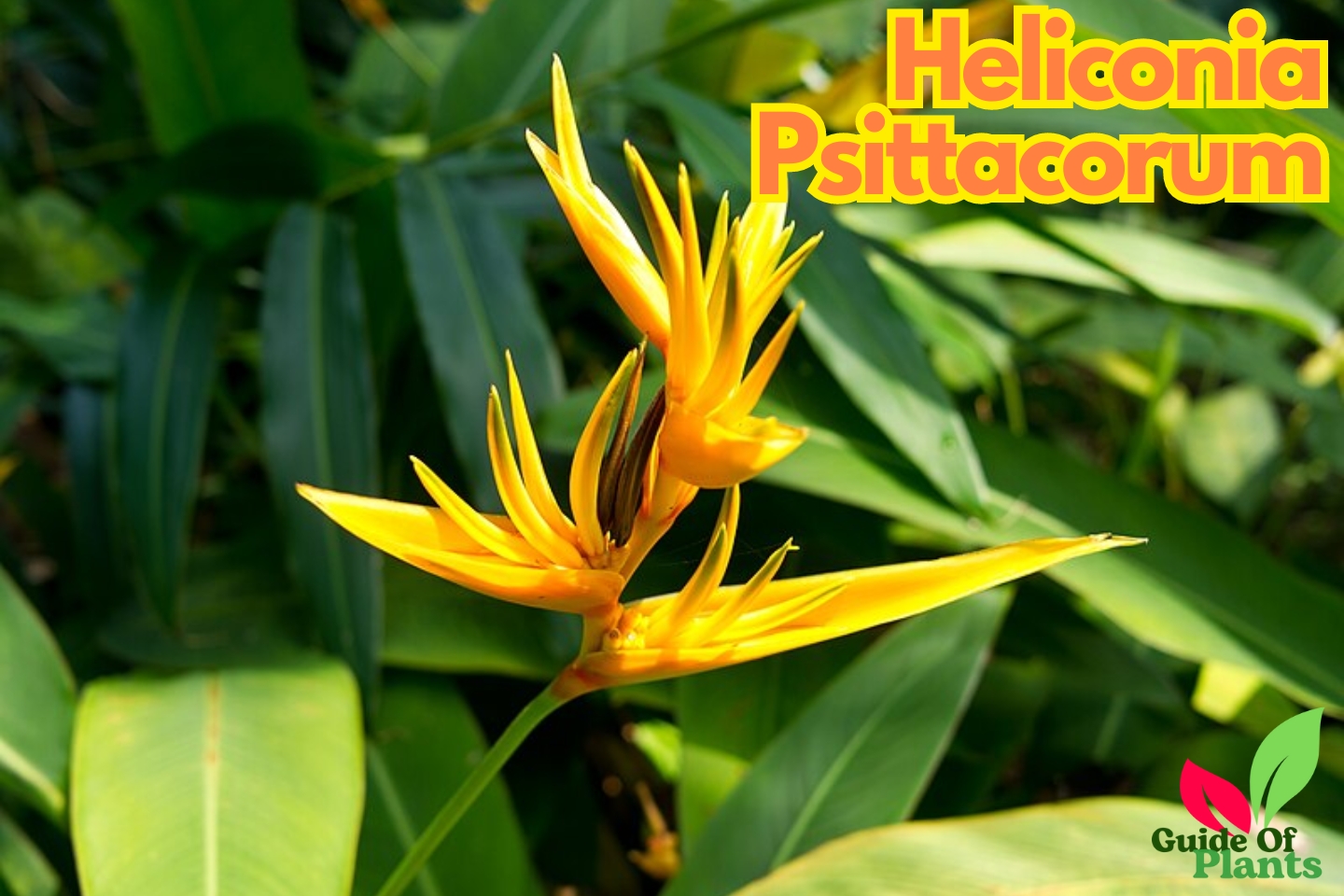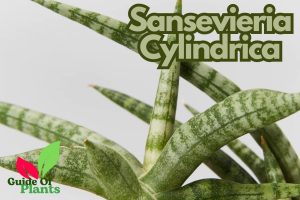Behold the majestic Heliconia psittacorum! With its brilliant red bracts fanning out like the wings of a tropical bird in flight, this exotic beauty captivates all who admire her.
Known by the common names parrot heliconia and parrot flower, the Heliconia psittacorum hails from the heliconia family Heliconiaceae. Native to the lush rainforests of Central America and Mexico, this striking plant has found fame across the tropics for its unparalleled floral spectacle.
This clumping perennial can reach towering heights up to 15 feet tall and persists for many years when provided ideal conditions. Preferring dappled sunlight and constant moisture, the Heliconia psittacorum thrives in habitats from partially shaded understories to poolside plantings. Let’s know more with Guide of Plants.
Table of Contents
Native Range Of Heliconia Psittacorum

The Heliconia psittacorum is native to the tropical regions of Central America and Mexico. Specifically, this species is endemic to the hot and humid lowland rainforests located along the Pacific coast and watershed basins that drain into the Pacific.
Its range spans southwestern Mexico (Jalisco, Colima, Guerrero, Oaxaca, Chiapas) down through Guatemala, El Salvador, Honduras, Nicaragua, Costa Rica, and central Panama. It thrives in lush jungle habitats at elevations below around 1,500 m (4,900 ft).
This explains that the parrot heliconia is native to tropical lowlands from Mexico down through Central America, residing in steamy rainforest environments ideal for this spectacular tropical plant.
Also Know About: White Phalaenopsis Orchid
Unveiling the Beauty
The Heliconia psittacorum is truly a sight to behold. As an erect, evergreen perennial, this herbaceous plant persists year after year while putting on a dazzling floral display when in bloom.
Distinctive Foliage
From the base emerge dense tufts of pointed, bright green leaves. The smooth, lanceolate leaves measure around 2 feet long by 4 inches wide. Prominent veins run the length of the leaves, extending into a narrow pointed tip. The striking foliage adds rich texture and contrast to the landscape.
Showstopping Inflorescence
But the real showstopper lies in the plant’s inflorescence—that is, its flowering structure. Arising from the leafy stalks, sturdy flower stems called peduncles hold the plant’s colorful bracts and blooms. The peduncles emerge singly or in clusters, extending upright 3-6 feet tall.
At the top open colorful modified leaves called bracts. The firm, wax-like bracts flare outwards, with sizes spanning 4 to 12 inches long. Most commonly, the bracts shine in glistening crimson-red hues. But color variations also bring shades of orange, yellow, green, and maroon.
Some liken the shape to a parrot in flight, while others see a dancer’s skirt swirling mid-twirl. Regardless of perspective, the intricate shape and transfixing color prove visually arresting.
Behind the vibrant bracts hide tiny yellow and black bisexual flowers. These delicate blooms last only a day before giving way to green seed pods.

Optimal Growing Conditions
To support prolific growth and persistent flowering, the Heliconia psittacorum requires optimal environmental conditions. This includes partially shaded habitats, where diffuse sunlight filters through overhead canopy layers. Areas receiving morning sun and afternoon shade prove ideal. Too much harsh light can scorch tender new growth.
Abundant moisture also provides a necessity, as the plant’s extensive root systems demand constant hydration. Ideal sites position plants near pond edges or low-lying areas fed by reliable water sources. Stream banks, forest margins, and shaded courtyard gardens all offer suitable homes if adequate irrigation is provided during dry periods.
Nutrient-rich, humus-heavy soils help fuel vigorous growth and bright blooms year after year. Occasional feedings with balanced tropic plant fertilizers keep the plants well nourished, while pH between 5.5-7.0 supports healthy uptake.
Hardiness and Distribution
As a tropical plant that thrives in steamy conditions, the native range spans Central American rainforests through Mexico’s lowland jungles. Here steamy daytime heat followed by balmy nights, plus over 150 inches of annual rainfall, create an ideal climate.
Few temperate zone gardens offer comparable conditions. Thus the Heliconia psittacorum can only persist outdoors year-round through USDA Hardiness Zones 10-11. In marginal zones,moving into a frost-free greenhouse provides the humidity, warmth and shelter needed to survive cold months.
The adaptable plants continue blooming seasonally when grown as houseplants. Just place in bright, indirect light and keep soil consistently moist. Apply balanced fertilizer monthly while actively growing. With a minimum temperature of 60° F, indoor plants can produce exotic tropical accents during dreary winter months.
Propagation
Wild plants spread prolifically via underground stems called rhizomes. New shoots emerge at intervals, expanding the colony over time. Mature clumps may cover 15-20 square feet in habitat.
Cultivated varieties prove more challenging to propagate. However, modern tissue culture breakthroughs allow mass production of young starter plants. Home gardeners can also nurture their own plants from fresh seeds. Just sow seeds in sterile media, keep humid and warm, and transplant seedlings when leaves emerge.
Once established, mature plants live for many years before flowering declines. Thus propagation efforts preserve admired specimens for the future.
Also Know About: Sansevieria Cylindrica

Landscape Uses
Valued as much for its tropical allure as its vibrant blooms, the Heliconia psittacorum brings exotic appeal to gardens across warmer zones. Let’s explore some of its best landscape uses.
Spots of Color
Few plants can compete with the saturated hues found in heliconia bracts. Their showy crimson, orange and yellow bracts look stunning against backdrops of green foliage or neutral walls. Place in beds and borders to draw the eye towards flashy color accents. Contrast with cool hues like purple fountain grass (Pennisetum ‘Rubrum’) or silvery Japanese painted fern (Athyrium niponicum ‘Pictum’) for added drama.
Tropical Frames
The large stature and distinctly tropical look of the Heliconia psittacorum make it ideal for framingEntries and garden focal points. Flank patio doors with a matching pair, Use towering stems to disguise unsightly features like AC units or propane tanks. A stunning stand surrounds water features, where the colorful reflections double the impact.
Shade Gardens
Beneath tree canopies or covered patios, borders often lack visual excitement beyond ground covers and foliage plants. Here the Heliconia psittacorum proves invaluable by injecting vibrant color into the shade. Scatter individuals or small groups amongst lower-growing varieties like caladiums, impatiens and ivies. The contrast showcases both while enhancing dark corners.
Beyond the Beauty
While admired chiefly for its ornamental merits, the rare and dazzling Heliconia psittacorum offers additional benefits sought after by gardeners worldwide.
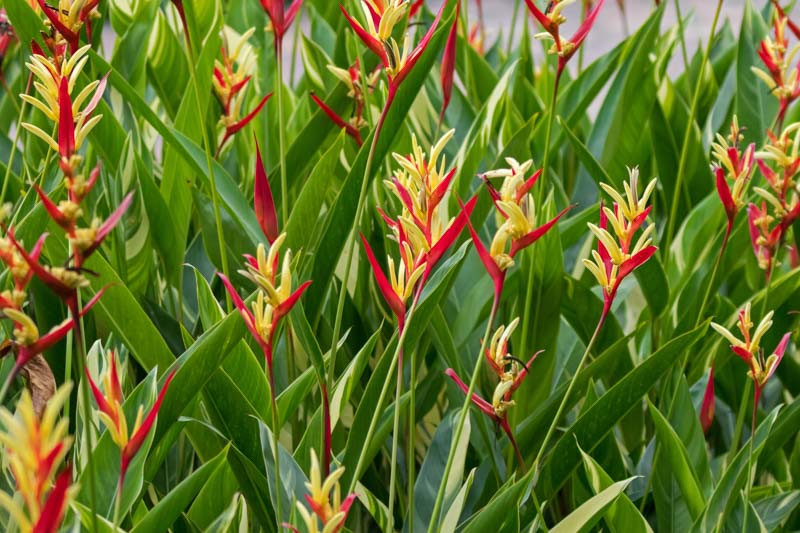
Ornamental Value
This comes as no surprise given its acclaim across the tropics. The vibrant red bracts persist for weeks, unlike delicate flowers that quickly fade. Meanwhile, the lush green foliage provides a striking contrast. Whether grown in beds, borders or containers, the Heliconia psittacorum guarantees an exotic focal point sure to garner attention.
Cut Flower Potential
In fact, bold stems make exceptional cut flowers. Place in a tall vase to showcase the full floral display. Bract colors remain brilliant for 14-21 days with proper care, outlasting most traditional options. The enduring nature as a cut flower makes heliconias a mainstay in tropical flower arrangements.
Hummingbird Magnetism
While humans admire the showy bracts, nectar-seeking birds flock to the small tubular blossoms hidden within. Hummingbirds especially favor the rich nectar as an energy source. Planting Heliconia psittacorum ensures regular hummingbird visitors to entertain all.
Medicinal Applications
Various cultures have utilized heliconias for traditional herbal remedies over centuries. Modern research now investigates antibacterial and antifungal properties within leaf extracts. Other compounds show medicinal potential as well. Though not confirmed as medicines, historical medicinal applications further demonstrate this plant’s immense value.
Versatile Uses
Between beloved ornamental attributes, cut flower potential, wildlife appeal, and underexplored medicinal prospects, the Heliconia psittacorum certainly offers abundant benefits beyond beauty alone. As this exotic tropical plant gained mainstream popularity, its manifold uses will only continue expanding.
Also Know About: Shenzhen Nongke Orchid
A Journey Through Facts
While the Heliconia psittacorum offers captivating beauty, a closer look reveals even more fascinating truths hidden within its lush foliage and flamboyant flowers. Let’s explore some intriguing facts behind this already extraordinary plant.

Pollination by Hummingbirds
As mentioned, small hummingbirds serve as the primary pollinators of Heliconia psittacorum blooms through their search for nectar. Attracted by the yellow and blackish flowers nestled between the colorful bracts, the birds insert their specialized beaks into the flower tubes to extract the sweet treat. In the process, pollen grains stick to their heads and faces, soon transferring to the next blossom visited.
By the rapid flapping wings allowing the tiny birds to hover in midair, Heliconia psittacorum flowers receive excellent cross-pollination services. This symbiotic relationship guarantees both nectar for the birds and viable seed production for future plant generations.
An Appearance Inspiring Namesakes
In fact, even the plant’s botanical name highlights its visual nature. The species name “psittacorum” directly associates with parrots and parakeets of the bird family Psittacidae. This describes the bracts’ resemblance to a parrot’s vibrant plumage and distinctive shape.
Common names like parrot heliconia and parrot flower further emphasize the flamboyant flowering structure. No matter its identification, one cannot deny this plant boasts captivating colors and form much like its namesake tropical birds.
Diverse Cultivars
While flaming red bracts may represent the archetypal Heliconia psittacorum, selective breeding has unveiled even more variation. Today growers offer cultivars with orange, yellow, chartreuse, and even dark maroon bracts. Additionally, sizes range from more compact 4-foot varieties to soaring 15-foot giants.
This expandability showcases the genetic diversity retained within the species. It also allows gardeners to choose shades to contrast or coordinate with existing landscapes. With many cultivars still undiscovered, Heliconia psittacorum will likely continue wowing the world with its beautiful biodiversity.
Year-Round Appeal
While long-lasting through warm seasons, the Heliconia psittacorum offers year-round enjoyment when cultivated indoors as a houseplant. Provided ample space, moisture, and nutrients, potted plants thrive near sunny windows to offer exotic accents even during cold months. Pruning dried bracts after flowering redirects energy into leaves and next bloom cycle.
As mentioned, the adaptable plant readily adjusts to indoor life across a variety of climates. Easy propagation from divisions or seeds perpetuates treasured plants for decades to come. Whether grown outdoors or inside, the Heliconia psittacorum guarantees stunning beauty every day of the year.
Two Life Cycles
Interestingly, cultivated heliconias demonstrate two distinct life cycles. Initially, young sprouts focus solely on root and leaf establishment for 18-36 months post-germination. Only once substantial rhizomes accumulate does the transition to flowering occur. As energy shifts to blooms, the two stages continue alternating annually.
This natural cycle means newer plants require patience before unveiling their cosmetic potential. However, the wait proves worthwhile once those unmistakable crimson bracts first unfurl against deep green leaves after several seasons of foliage development.
Bringing the Tropics Home
The vibrant beauty of the Heliconia psittacorum invokes imagery of steaming jungles and swaying palm fronds. While most gardeners cannot replicate these exact environments, some thoughtful considerations when cultivating heliconias can help capture the exotic allure.

Care and Cultivation
Although low-maintenance once established, providing ideal growing conditions enhances health and flowering. Heliconia psittacorum thrives with filtered sunlight, abundant moisture, humid air, and nutrient-rich soil.
Water deeply to saturate the root zone, allowing the soil to slightly dry between waterings. Increase frequency in summer heat. Apply balanced tropic plant fertilizer monthly during active growth periods.
Pruning spent flowering stems preserves energy for leaf and rhizome growth. Cut back limp foliage or remove dried leaves/debris to keep plants looking tidy.
Soil Preferences
Well-draining yet moisture-retentive soil provides ideal nutrition and oxygen levels. Mix compost and coconut coir into native soils to improve drainage while increasing water retention. The slightly acidic nature also suits the Heliconia psittacorum.
Monitor pH levels, as too much alkalinity causes nutrient lockout. Check using an at-home soil testing kit and amend as needed to restore acidity.
Climate Considerations
While native to perpetually humid rainforests, Heliconia psittacorum adapts well to less extreme settings. Outdoors, dappled sunlight beneath taller trees or shrubs mimics the native habitat. Careful planting near eastern exposures prevents afternoon sun scorch.
Indoors, a bright windowsill receiving several hours of direct sun suits most plants. Sheltered courtyard gardens offer another excellent location. Just supplement natural rainfall with frequent waterings.
Minimum temperatures around 60°F prove suitable, provided the roots don’t freeze. If cooler than ideal, containerized plants can transition indoors temporarily. Acclimate them slowly back outside once danger of frost passes to prevent shock.
With thoughtful care replicating steamy jungles, the incredible Heliconia psittacorum feels right at home embellishing gardens anywhere tropical plants persist.
Protecting Your Paradise
When cultivating an exotic tropical specimen like Heliconia psittacorum, it pays to safeguard your investment by preventing threats. Though generally vigorous, a few pesky insects or opportunistic diseases may compromise plant health. Catching issues early allows for prompt organic treatment targeting the source.
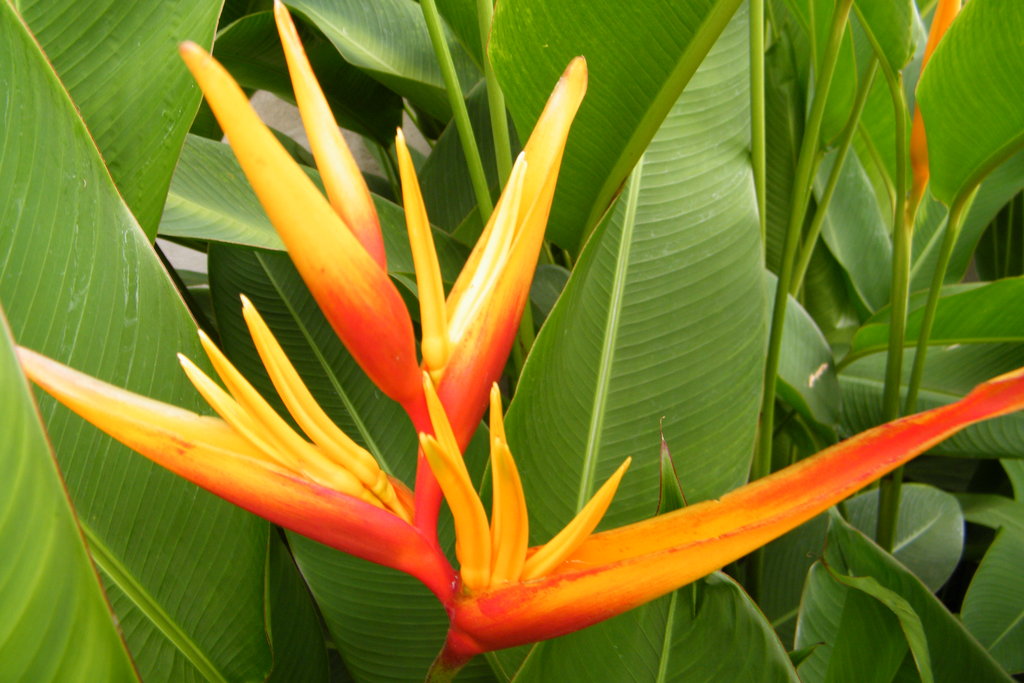
Pests on Patrol
Several sucking insects exploit the succulent foliage, leaving behind telltale damage if populations explode. Aphids inflict yellow speckling on leaves when feeding. Mealybugs coat stems and leaves with white waxy residue. Spider mites form sparse webs and cause stippling.
Monitor weekly for early detection, focusing on leaf undersides and stem joints. Remove major infestations by hand or use insecticidal soap sprays targeting the invaders. Apply repeatedly to break reproduction cycles. Introduction of ladybugs and other beneficial predatory insects also controls pests naturally.
Diseases Lurking About
Overwatering predisposes root rot fungal infections, causing stunted growth and yellowing. Improve drainage and allow soil to partially dry out to restore health. Leaf spots indicate bacterial or fungal diseases, starting as small lesions which expand to form unsightly marks. Remove and destroy affected foliage. Apply approved fungicides to protect unaffected tissue or use baking soda sprays to inhibit spread.
Catching diseases early keeps damage contained. So inspect routinely for any abnormalities and take action at first signs of infection. As problems intensify, plant recovery becomes unlikely, making vigilance critical.
By respecting the plant’s basic needs and addressing health issues promptly, your Heliconia psittacorum paradise will thrive for years of enduring beauty.
Sharing the Bounty
One certainly cannot hoard all the glamor and tropical delight of the Heliconia psittacorum to oneself. Thankfully, this willing grower freely multiplies when provided the right conditions. A few basic propagation methods efficiently multiply your stock to spread the vibrant beauty far and wide.
Propagation Made Simple
Like many rhizomatous tropicals, new Heliconia psittacorum plants arise easily through division and cuttings. Carefully sever vigorous shoots complete with roots and growing tip from the parent plant in springtime. Replant directly into prepared beds.
For smaller numbers, try removing and potting up rhizome sections, aerial shoots, or even individual stems. Keep evenly moist and warm until new leaf growth signals establishment. Then transition to the garden after any danger of frost.
The exponentially increasing plants generate excitement and opportunity for sharing. Offer baby heliconias as living gifts for fellow gardeners. Donate to nonprofit plant sales supporting community green spaces. Swap varieties with those passionate about the plant kingdom’s diverse offerings.
Joining the Heliconia Community
Connecting with other heliconia devotees proves mutually beneficial. Share personal experiences, stunning photos, or ask pressing questions within online forums and social media groups celebrating Heliconia psittacorum.
Discover new cultivation techniques, troubleshoot problems, locate rare varieties, and more amongst friendly faces.Even better, arrange to trade plants in person when possible. This allows seeing others’ plants firsthand while forging meaningful bonds around beloved botanicals.
Heliconia Psittacorum Ecological Importance And Potential Cultural Significance
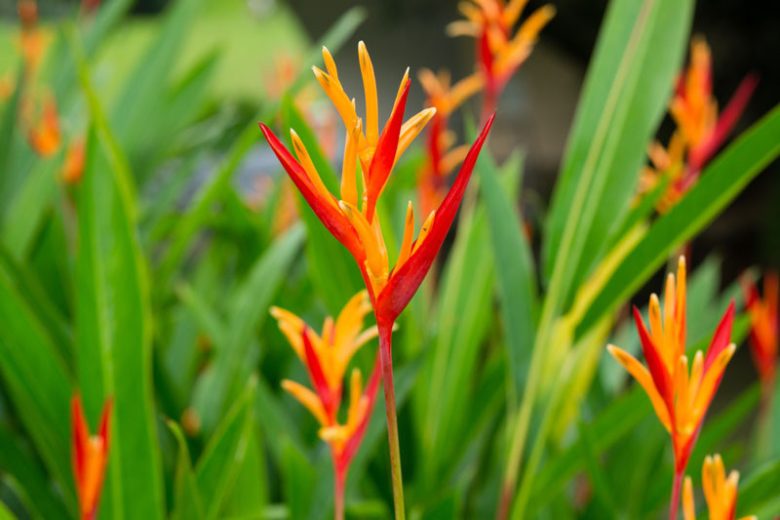
The vibrant Heliconia psittacorum holds ecological importance in its native Central American rainforests as a critical food source for pollinators like hummingbirds and insects. Its brightly colored bracts and sweet nectar attract various small birds and nectar bats, which serve as efficient pollinators for the heliconia’s seed production and genetic diversity. This vital plant-pollinator interaction helps uphold fragile rainforest ecosystems. Beyond pollination services, the Heliconia psittacorum provides shelter and resources for certain butterfly larvae as well.
Additionally, this beautiful tropical plant likely carries cultural significance amongst indigenous pre-Columbian peoples spanning its native lands. Various Heliconia species have served as food, medicine, rituals, decorations, and more throughout history. Though documentation remains scarce on uses of Heliconia psittacorum specifically, its prominence and uniqueness in these forest habitats suggest traditional cultural relevance lost to time. Today its aesthetic virtues support ecotourism, but further ethnobotanical research could uncover forgotten knowledge or modern applications significant to Central American heritage. Either way, the parrot heliconia’s inherent magnificence commands admiration as a living emblem of regional biodiversity through time.
Also Know About: 5 Tall Low Light Indoor Plants For Your Indoor Space
Conclusion
The illustrious Heliconia psittacorum stands as truly one of nature’s most unique and bewitching plants. From its flamboyant flowering structure to its versatile landscape appeal, this tropical spectacle captivates all who fall under its spell.
Vibrant crimson bracts flare against glossy foliage, showcasing the plant’s one-of-a-kind beauty and magnetism for admiring eyes. Long-lasting in both gardens and vase arrangements, Heliconia psittacorum’s vivid presence brings joy for weeks on end.
Beyond visual delight, this hardy herbaceous plant attracts precious pollinators, makes an easy houseplant, and shares itself freely once settled into its new home. Truly a gift that keeps on giving, the parrot heliconia rightfully claims its fame across the tropics and subtropics worldwide.
I invite all who crave more vibrant color and tropical allure to join me in planting this living masterpiece. A climate-wise selection for zones 10-11, the Heliconia psittacorum easily lights up any garden ready to embrace its exotic splendor. There is simply no substitute for witnessing firsthand how this beauty unfurls her brilliant plumage toward the sun in a spectacle like no other. Thanks for being with Guide of Plants.
What is Heliconia Psittacorum?
Heliconia psittacorum is a tropical flowering plant species known for its vibrant red bracts that flare out in a parrot-like shape. It is an herbaceous perennial in the Heliconiaceae family.
What are the characteristics of Heliconia Psittacorum flower?
The Heliconia psittacorum flower has bright red bracts up to 12 inches long shaped like a parrot in flight. Small yellow and black flowers emerge from behind the red bracts.
What are the characteristics of a parakeet flower?
The parakeet flower is a common name for the Heliconia psittacorum, referring to its red bracts that resemble a parakeet’s wings and tail. The “parakeet flower” also has long strap-like leaves and a flowering stem that can grow up to 15 feet tall.
Is the Heliconia flower poisonous?
No, Heliconia flowers like Heliconia psittacorum are not poisonous. All parts of the Heliconia plant are considered non-toxic.
What is Heliconia used for?
Heliconia like Heliconia psittacorum are popular ornamental plants used in landscaping for their vibrant, long-lasting flowers. They attract hummingbirds and serve as cut flowers. Some species have medicinal uses.
What is the real name of Heliconia?
The scientific name of the genus Heliconia is the real or officially recognized name. Heliconia Psittacorum is the specific epithet for the parrot heliconia species, also known as parakeet flower.

